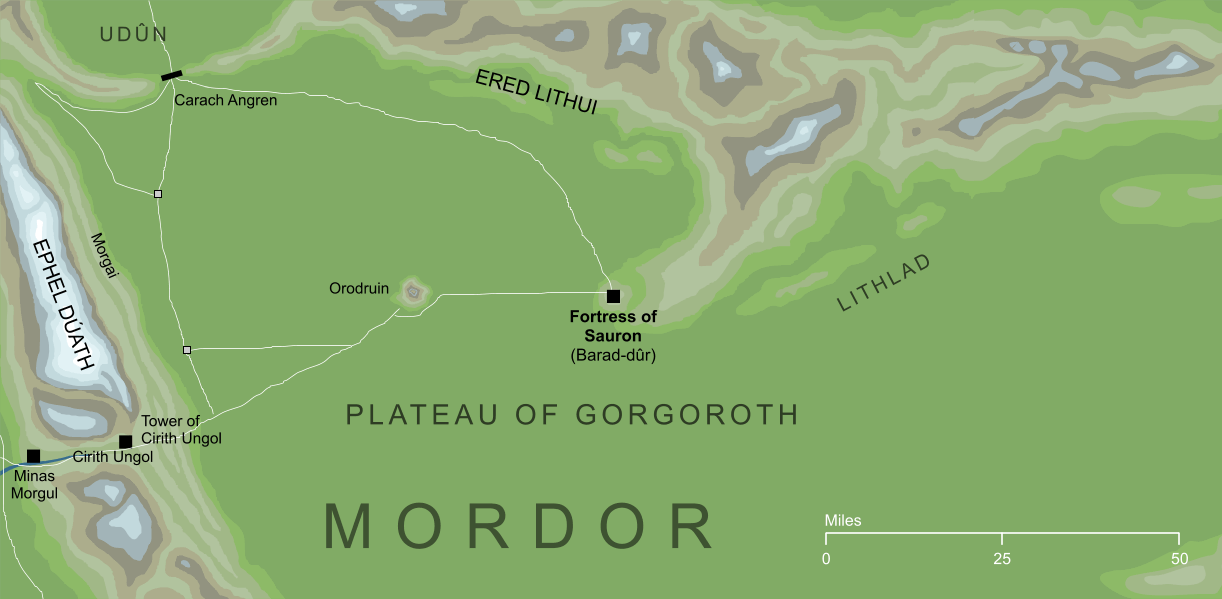- Cities and buildings
- Fields, plains and deserts
- Forests
- Hills and mountains
- Islands and promontories
- Lands, realms and regions
- Rivers and lakes
- Seas and oceans


 |
||||
|
|
|
Indexes: About this entry:
|
Fortress of SauronThe Dark Tower of Mordor
The immense, Shadow-shrouded stronghold of Sauron within the Black Land of Mordor, more usually known as Barad-dûr, the Dark Tower. The Tower rose out of the Plateau of Gorgoroth, and was raised on an arm of rock that ran southwards from the Ashen Mountains that formed Mordor's northern frontier. Forged for the most part from dark metal, it was wreathed in concealing darkness and fumes, so that the structure of the Tower itself was rarely visible. It was in about the year II 1000 that Sauron chose the land of Mordor as his dwelling-place in Middle-earth, and he soon began the building of a fortress there. Some six hundred years later, he made the One Ring in the Fire of Orodruin, and it was at this time that the Dark Tower reached its completion.1 The Barad-dûr served as the chief Fortress of Sauron for nearly two thousand years. It stood until the time of the War of the Last Alliance, a war begun by Sauron himself when he attempted to overrun the recently founded land of Gondor. The Gondorians rallied their fellow Dúnedain from the North-kingdom, as well as their allies the Elves, and eventually succeeded in defeating the Dark Lord. After their victory, the Fortress of Sauron was razed, but the power of the Ring meant that its foundations could not be completely destroyed. For much of the Third Age that followed, the Gondorians held Mordor against Sauron's return, but eventually their power began to wane. Sauron established himself during this period in the lesser fortress of Dol Guldur, but when the time was right he returned to Mordor. The Fortress of Barad-dûr was rebuilt on its old foundations, and from it the Dark Lord threatened the Free Peoples of Middle-earth once again. Unbreakable though the Fortress might have been, Sauron had reckoned without his lost Ring, failing to foresee that his enemies would seek to destroy it rather than claim it for themselves. During the War of the Ring, that Ring was indeed unmade. With its power lost, the foundations of the Fortress of Sauron were also broken, and the Dark Tower toppled into the dust of Gorgoroth. Notes
Indexes: About this entry:
For acknowledgements and references, see the Disclaimer & Bibliography page. Original content © copyright Mark Fisher 2020, 2022. All rights reserved. For conditions of reuse, see the Site FAQ. Website services kindly sponsored by Discus from Axiom Software Ltd.Discus DISC Candidate Matching helps find the optimum personalities for any role in moments. |